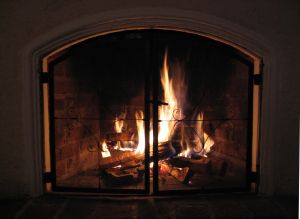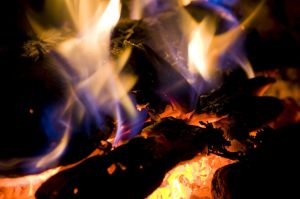5 Steps to Having a more Eco-friendly Fireplace
Article contributed by High’s Chimney Service, a Maryland chimney repair and cleaning company.
1. Know thy Enemy
If you’re concerned with the environmental impact of using your fireplace, the first step is understanding that impact. There are a few negative effects that using your fireplace might have:
- Tree reduction: Burning wood releases exactly as much carbon dioxide as letting wood decompose naturally; the former simply happens faster. Wood burning can affect greenhouse gas proportions if trees are cut down specifically for firewood and never replaced: this would result in fewer trees to absorb carbon dioxide for photosynthesis. In addition, deforestation utterly destroys local ecosystems.
- Particulate Matter: particulate matter is tiny, polluting solid particles, and is basically soot that is in the air. Wood is known to release a lot of particulate matter, which can cause many lung and other health issues.
- Carbon Monoxide: the odorless, colorless, poisonous gas that results from incomplete combustion
- Nitrogen oxides: NO and NO2 also result from incomplete combustion and deplete ozone layer. Nitrogen dioxide is smelly, brown and toxic.
- Methane is a potent greenhouse gas released in the burning of wood, natural gas, oil, or coal.
- Volatile organic compounds: VOCs are emitted as gasses from certain solids and liquids. Pure, natural trees will not emit VOCs when burned, but thousands of products will.
- Other chemicals: There are many other kinds of toxic, harmful gasses that can be emitted from pesticides, formaldehyde, arsenic, and other chemicals in man-made products if you are careless enough to burn these.
2. Don’t burn toxins
VOCs and toxins need not be released when you use your fireplace, as long as you burn only pure firewood and use the right kind of kindling. This means you should avoid the following:
- Any treated wood, like pallets, cardboard, or particle board
- Glued, stained, or painted wood
- Colored or glossy paper (plain black and white newspaper is okay for kindling but magazine-type paper burns toxic)
- Driftwood (the ocean salt (sodium chloride) releases chlorine gas)
- Moldy or diseased firewood
- Trash – if it isn’t pure firewood, there’s a good chance there are harmful chemicals
3. Use good firewood
Even if you burn non-toxic, chemically unadulterated wood, you may still be releasing more particulate matter and greenhouse gasses than you should if you burn an inefficient fuel. Incomplete combustion causes many pollutants, and particulate matter can be reduced if you can more heat from less wood. The biggest secret to good firewood is to use dry, or “seasoned”, wood. Some wood may need to be left out to dry for over a year to fully season, and seasoned wood will be lighter, gray or dark on the outside(as opposed to green), white on the inside, cracked, and have no bark or peeling bark.
4. Burn hot
Burn your fire hot (but safe) to ensure full combustion and efficiency. This means, you should use a good sized fire. This also means you should never let the fireplace smolder; smoldering produces a lot of smoke and little heat. Smoke is full of particulate matter; the less you can create per unit of heat generated, the better off everyone will be.
5. Keep your appliance efficient
A poorly-maintained chimney is incredibly inefficient (not to mention unsafe). A dirty chimney that has heavy creosote buildup or is clogged is inefficient. Leaky chimneys, damaged chimney liners, and poorly vented chimneys are all inefficient. If you use wood heat very frequently, you also might want to consider upgrading to a more efficient appliance like a wood burning insert or wood pellet stove.
Anytime you burn fuel, a certain amount of pollution is created. However, when you use your fireplace, you have enormous amount of control over how eco-friendly you will be.
Northeastern Chimney, Inc
37 Cody Street, West Hartford, CT 06110
Phone: 860-233-5770





